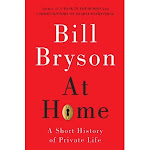Like any beer, we start with the grains. What you see above are flaked barley and roasted barley. These are what give the beer its flavor, and with each different combination of grains you use, a different flavor can be developed. There's a lot more to it than that, of course, but grain is a starting point!
 Here we have our grain all bagged up in cheese cloth, and ready to go. This is how you start your wort (which apparently is pronounced wert ). The grains are steeping in 160 degree water, for varying times, depending on your recipe.
Here we have our grain all bagged up in cheese cloth, and ready to go. This is how you start your wort (which apparently is pronounced wert ). The grains are steeping in 160 degree water, for varying times, depending on your recipe. Here's the wort, cooking away, releasing all the sugars and flavors from the grains. This recipe is actually a partial mash. Usually you'd make your wort all in your big brew pot, but for reasons not entirely clear to me, this is a bit different, and starts with a smaller amount of water at first. Like my crazy harvest yellow stove...and, um, crazy green walls?

The next step for this particular recipe was sparging, which just means taking your grains out of the wort and into a colander over your bigger brew pot, which is full of water. You then pour the wort over the grains, to get every last bit of sugar into the clean water in your pot. In my mind this is like adding water to a concentrate, but I'm not sure if that's entirely accurate...I'm more of a "relax, have a home brew" kind of gal, than a crazy, measure measure test test one. Anyway, here's what sparging looked like: messy.

Next we added in the malt - which is yet another grain/sugar component. Leaving it at that, we'll just say it lends flavor and give the yeast even more sugar to chow on. This recipe used an dried and an extract malt. The dried stuff looks like powdered milk, and can be very hard to stir in. It clumps and looks alarming, but if you just keep stirring, it all takes care of itself. After malting, you boil boil, and add in you hops.
Aaaahhh, hops. T threw them in before I could get a picture, but these Kent Golding hops were mushed into big pellets. They look like giant rabbit food, but smell like spicy, peppery, bitter green goodness. I tried chewing some loose hops before, and whew, it is bitter. Hops are exactly that element in beer - the bitterness. when you add them into the wort, they tend to make things, well, active. And when you throw them all in at once, they tend to make your pot boil over...like ours did. Doh! Well, all was not lost, and here's what it all looks like, boiling away. Murky, eh? You can see the hops on the left of the picture, sort of.

Okay, I think there's going to have to be a part 2 to this process! Next post: pitching the yeast, aerating and letting her go!





No comments:
Post a Comment